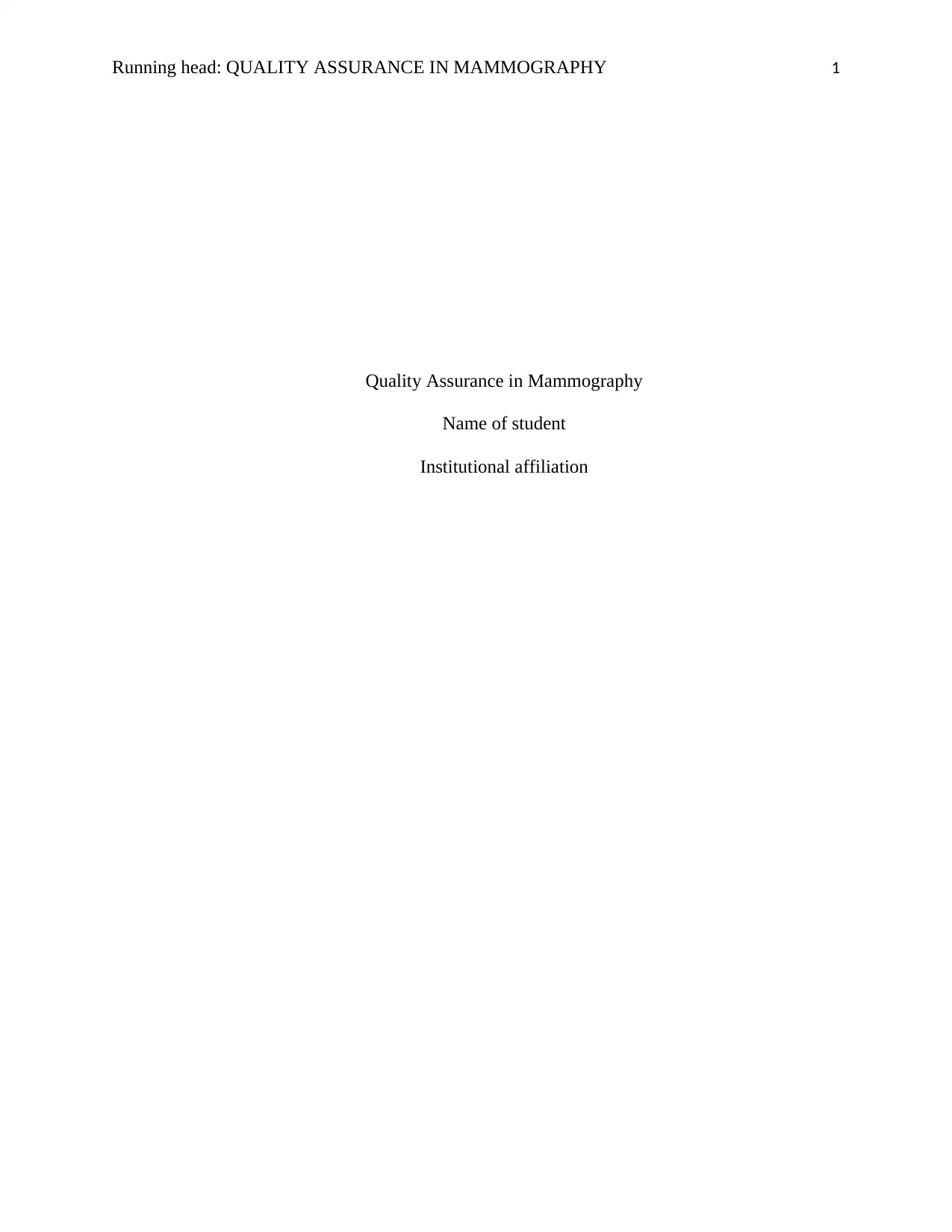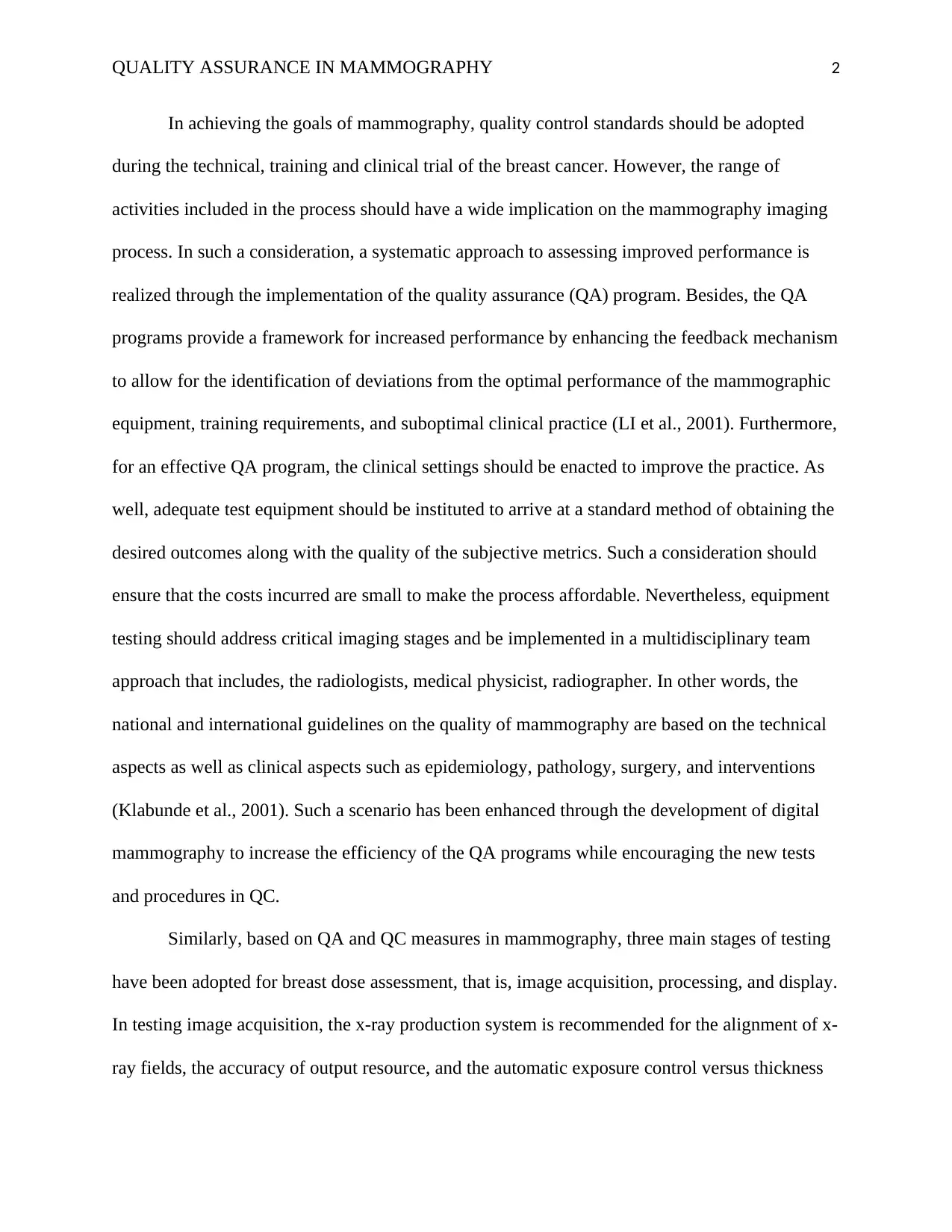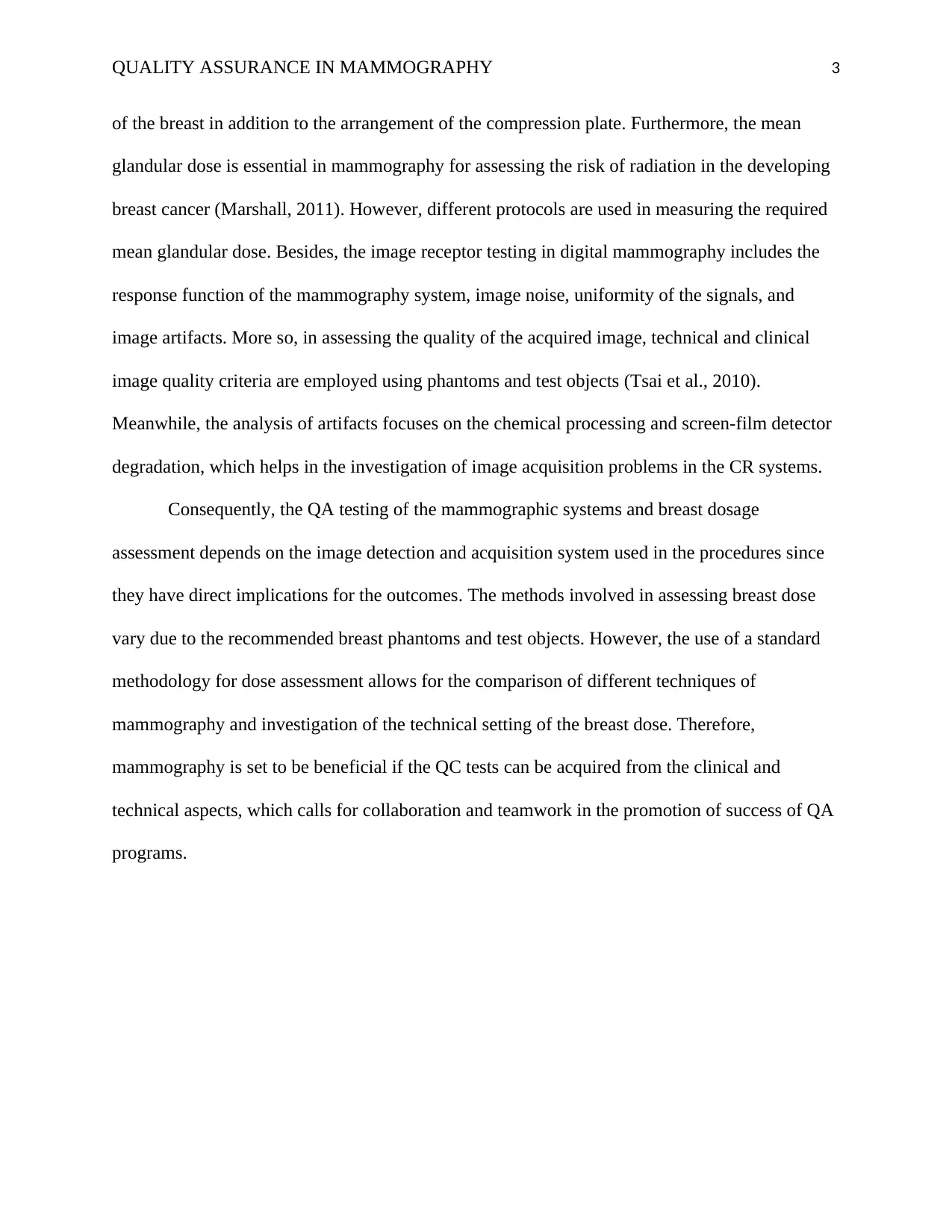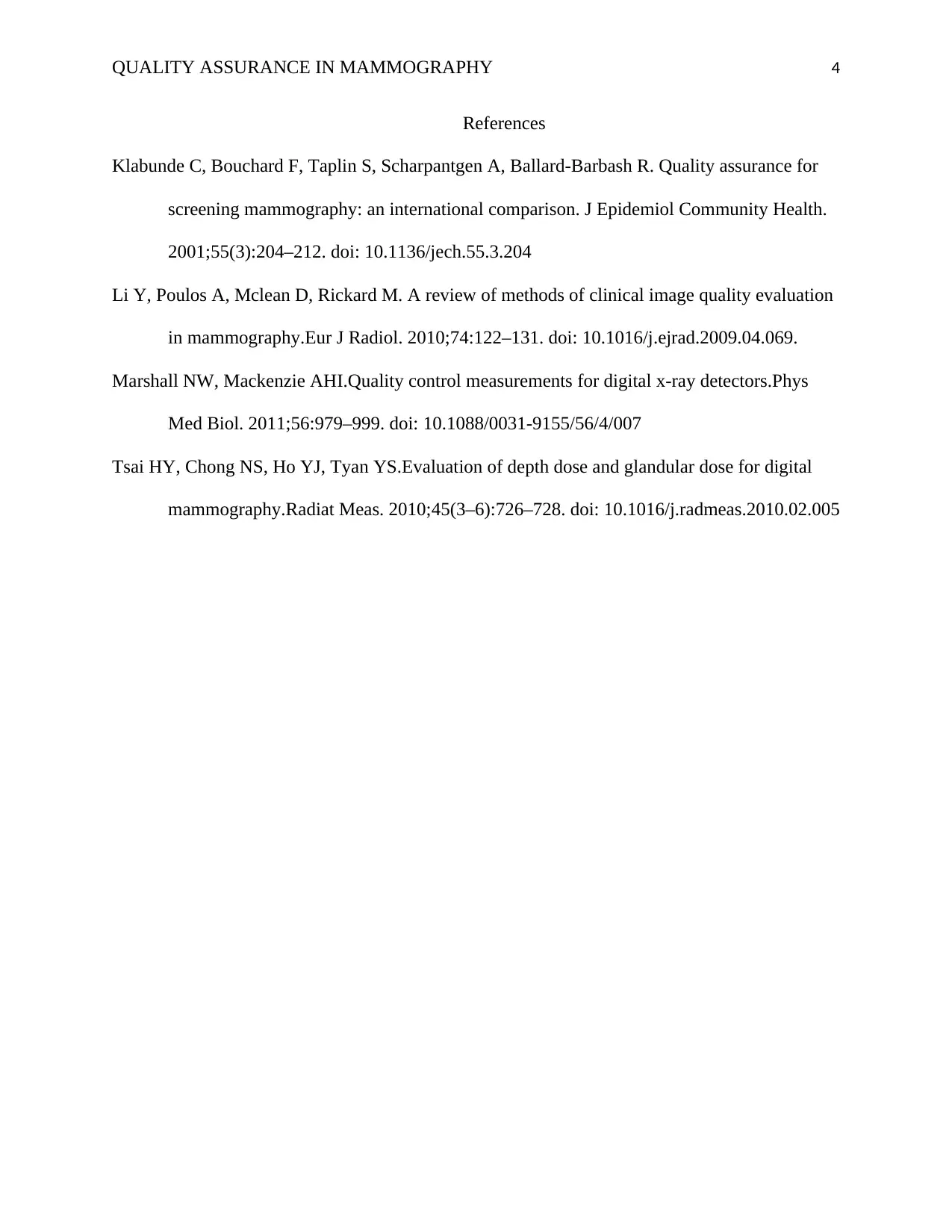Mammography Quality Assurance: Technical and Clinical Report
VerifiedAdded on 2020/04/07
|4
|769
|54
Report
AI Summary
This report examines the critical role of quality assurance (QA) in mammography, emphasizing the importance of systematic approaches to improve performance in breast cancer screening. It details the implementation of QA programs, which provide a framework for enhancing performance and identifying deviations from optimal practices. The report discusses the technical and clinical aspects of mammography QA, including image acquisition, processing, and display, as well as breast dose assessment and image quality criteria. It highlights the multidisciplinary team approach involving radiologists, medical physicists, and radiographers, and references national and international guidelines. Furthermore, the report considers the impact of digital mammography on QA programs and explores testing stages, including x-ray production, image receptor testing, and artifact analysis. The conclusion stresses the importance of collaboration and teamwork to promote the success of QA programs and improve patient outcomes.
1 out of 4






![[object Object]](/_next/static/media/star-bottom.7253800d.svg)